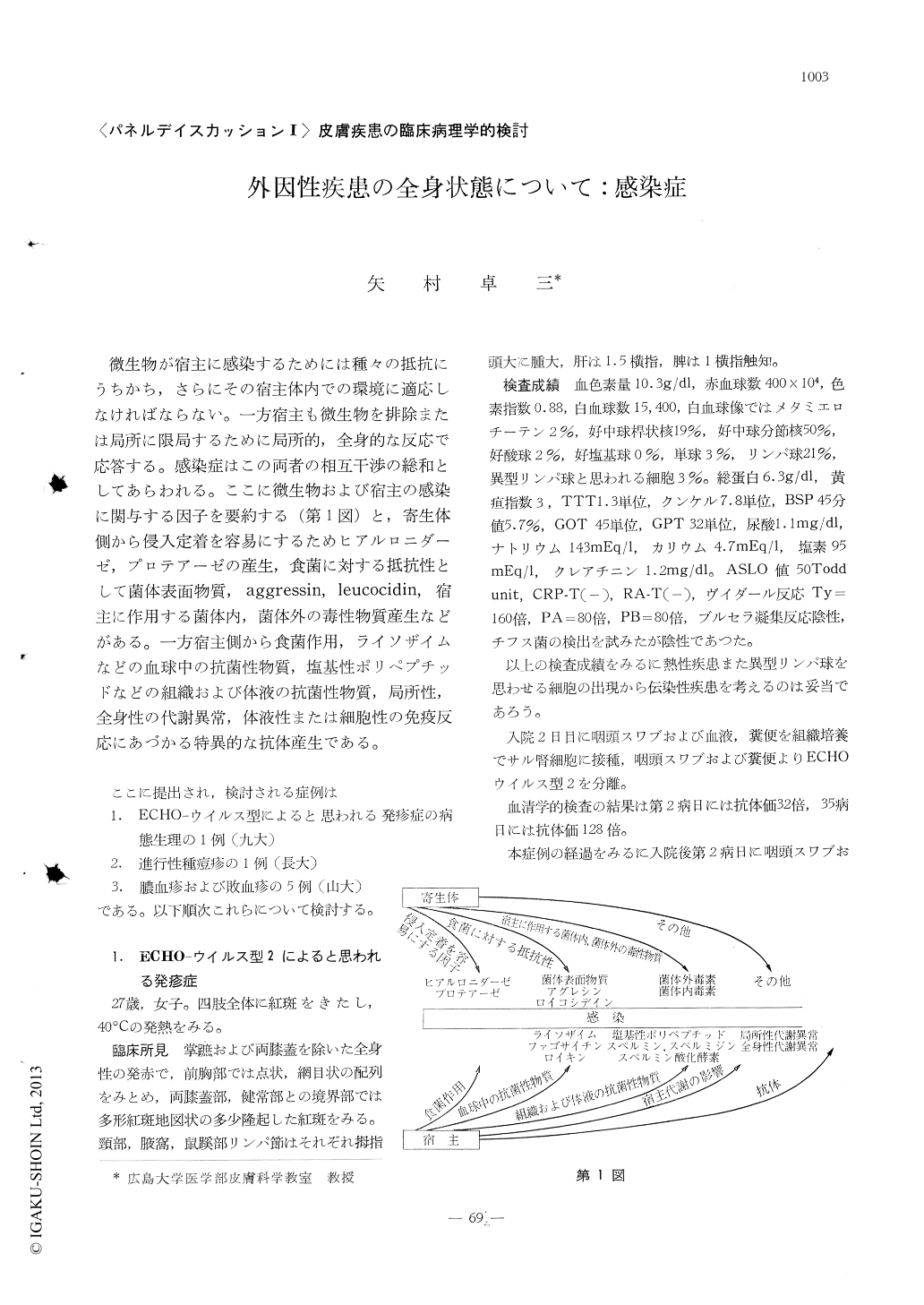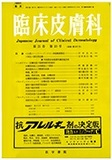Japanese
English
- 有料閲覧
- Abstract 文献概要
- 1ページ目 Look Inside
微生物が宿主に感染するためには種々の抵抗にうちかち,さらにその宿主体内での環境に適応しなければならない。一方宿主も微生物を排除または局所に限局するために局所的,全身的な反応で応答する。感染症はこの両者の相互干渉の総和としてあらわれる。ここに微生物および宿主の感染に関与する因子を要約する(第1図)と,寄生体側から侵入定着を容易にするためヒアルロニダーゼ,プロテアーゼの産生,食菌に対する抵抗性として菌体表面物質,aggressin,leucocidin,宿主に作用する菌体内,菌体外の毒性物質産生などがある。一方宿主側から食菌作用,ライソザイムなどの血球中の抗菌性物質,塩基性ポリペプチッドなどの組織および体液の抗菌性物質,局所性,全身性の代謝異常,体液性または細胞性の免疫反応にあづかる特異的な抗体産生である。
ここに提出され,検討される症例は
Infectious diseases are results of complicated "Host-parasite relationships."
Seven cases of several kinds of infectious dermatoses were presented and their clinical course and results of laboratory tests were summarized. The cases were as follows :
(1) One case of exanthematous infectious disease due to ECHO virus (type 2) (Kyushu Univ.)
(2) One case of progressive vaccinia (Nagasaki Univ.).
(3) Five cases of pycmia or septicemia (Yamaguchi Univ.).
One of the remarkable laboratory findings was that CRP was positive early in these cases and went well with the clinical course.

Copyright © 1967, Igaku-Shoin Ltd. All rights reserved.


